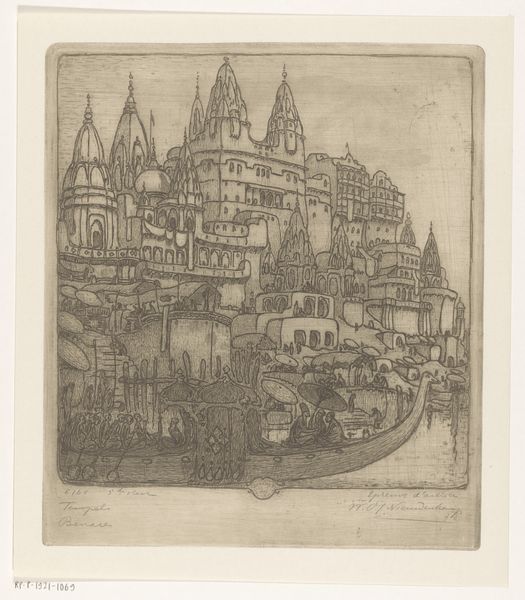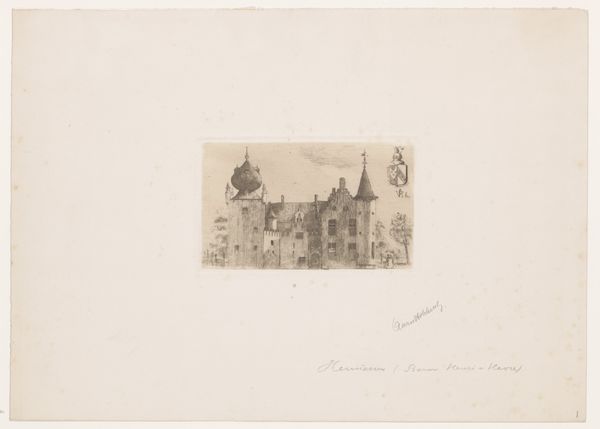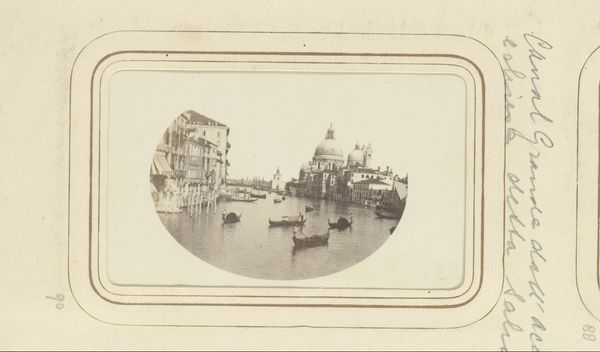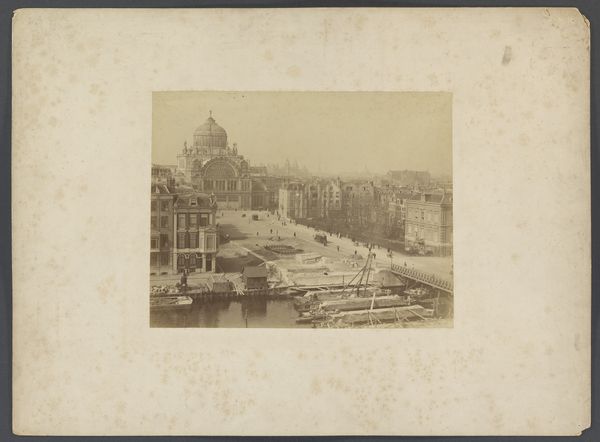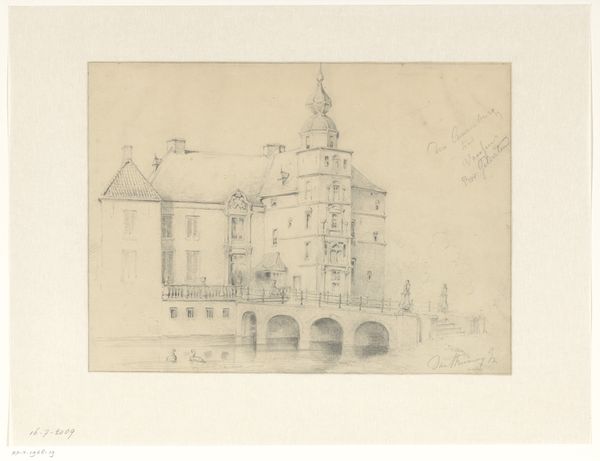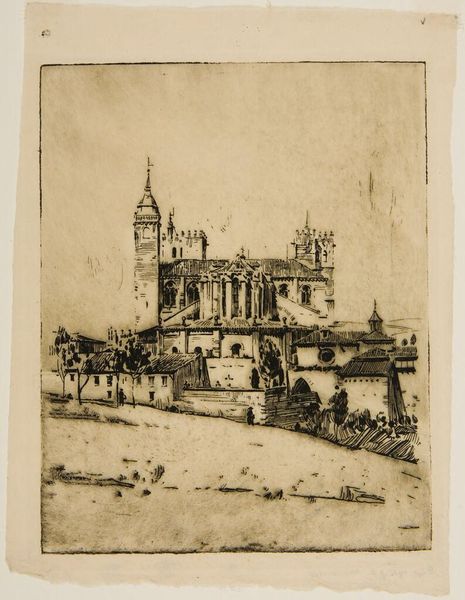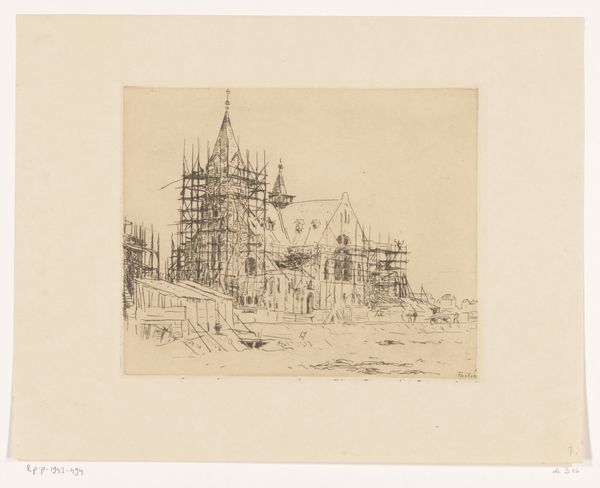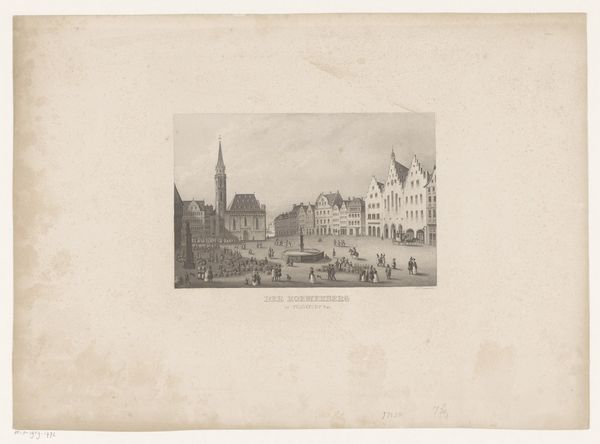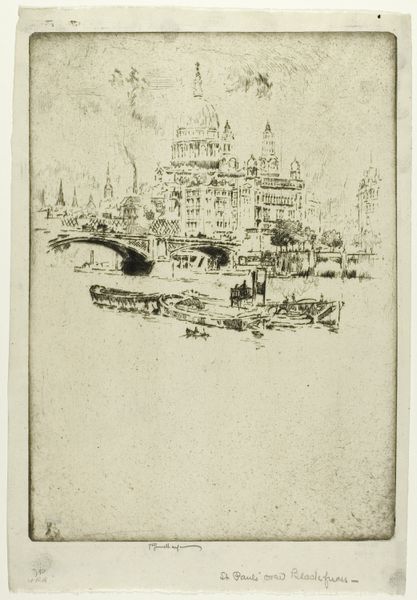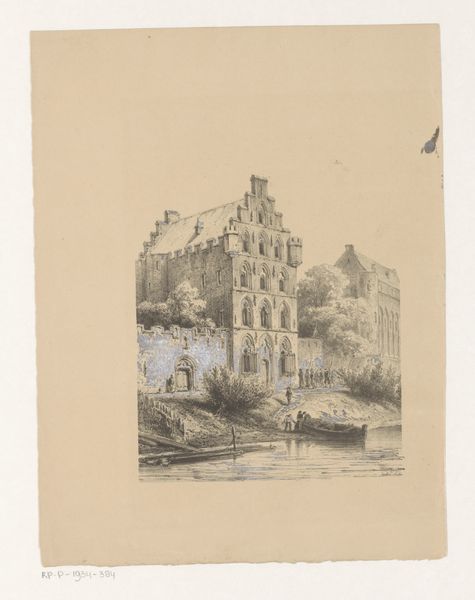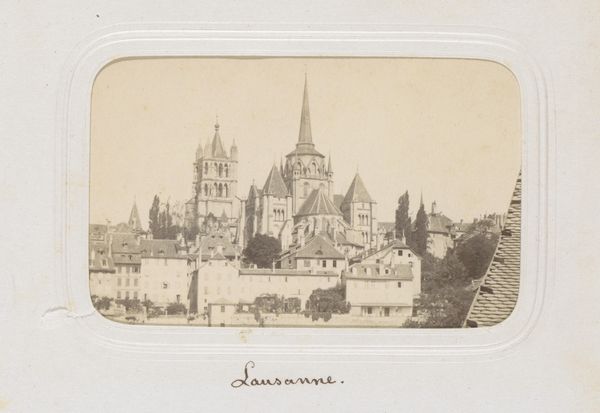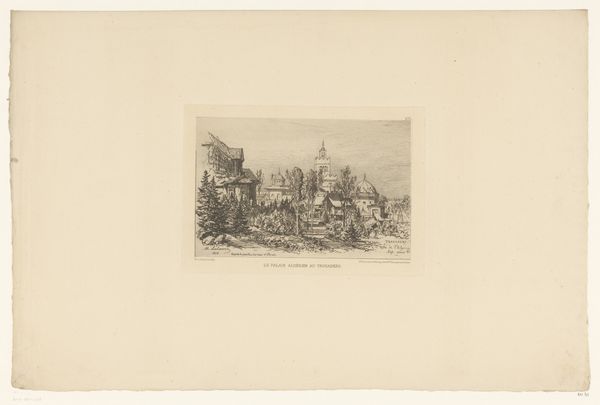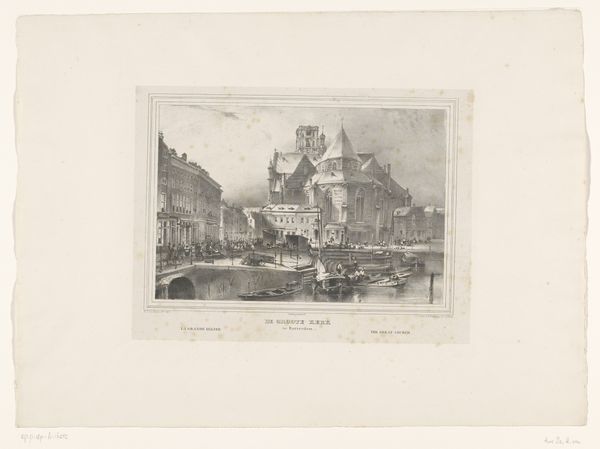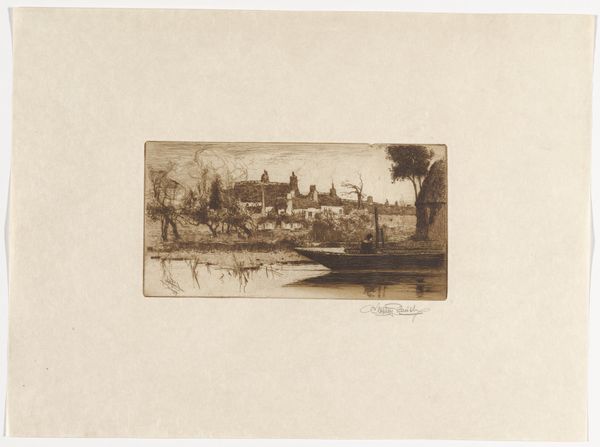
Dimensions: height 160 mm, width 205 mm
Copyright: Rijks Museum: Open Domain
Editor: So, this is Joseph Pennell’s “St Paul's gezien van de rivier,” an etching from 1905. It’s a cityscape, and immediately feels… hazy and maybe a little romantic. It definitely captures a certain mood. What do you see in this piece, beyond the obvious depiction of London? Curator: The haze, as you call it, feels more like the Industrial Age pressing down on the iconic architecture. Look closely; notice how St. Paul’s, while prominent, is almost ghost-like, as if struggling to rise above the river's edge. Editor: So you’re not seeing a purely picturesque scene, but more of a commentary on industrialization? Curator: Exactly. Remember, the dome of St. Paul’s is heavily symbolic – a representation of spiritual and civic power. But here, it appears muted. Do you see how the heavy lines of the riverbank almost seem to imprison it? It's as if Pennell is visually debating the old world versus the new. What emotional impact does that contrast create for you? Editor: I see what you mean! I guess I was drawn to the surface appeal. But now, noticing the tension, I feel this disquiet too. The architectural symbol seems almost defeated... Curator: Perhaps not defeated, but certainly challenged. The etching becomes a symbol for its era, a society in flux, questioning its own values in the face of progress. A dialogue rendered in ink, mirroring the one unfolding in society. Editor: This has completely changed how I see the print. It's not just a pretty picture, it's a statement! Curator: Indeed. Art often serves as a cultural mirror. Now you see the potential within that initially ‘romantic haze.’
Comments
No comments
Be the first to comment and join the conversation on the ultimate creative platform.
